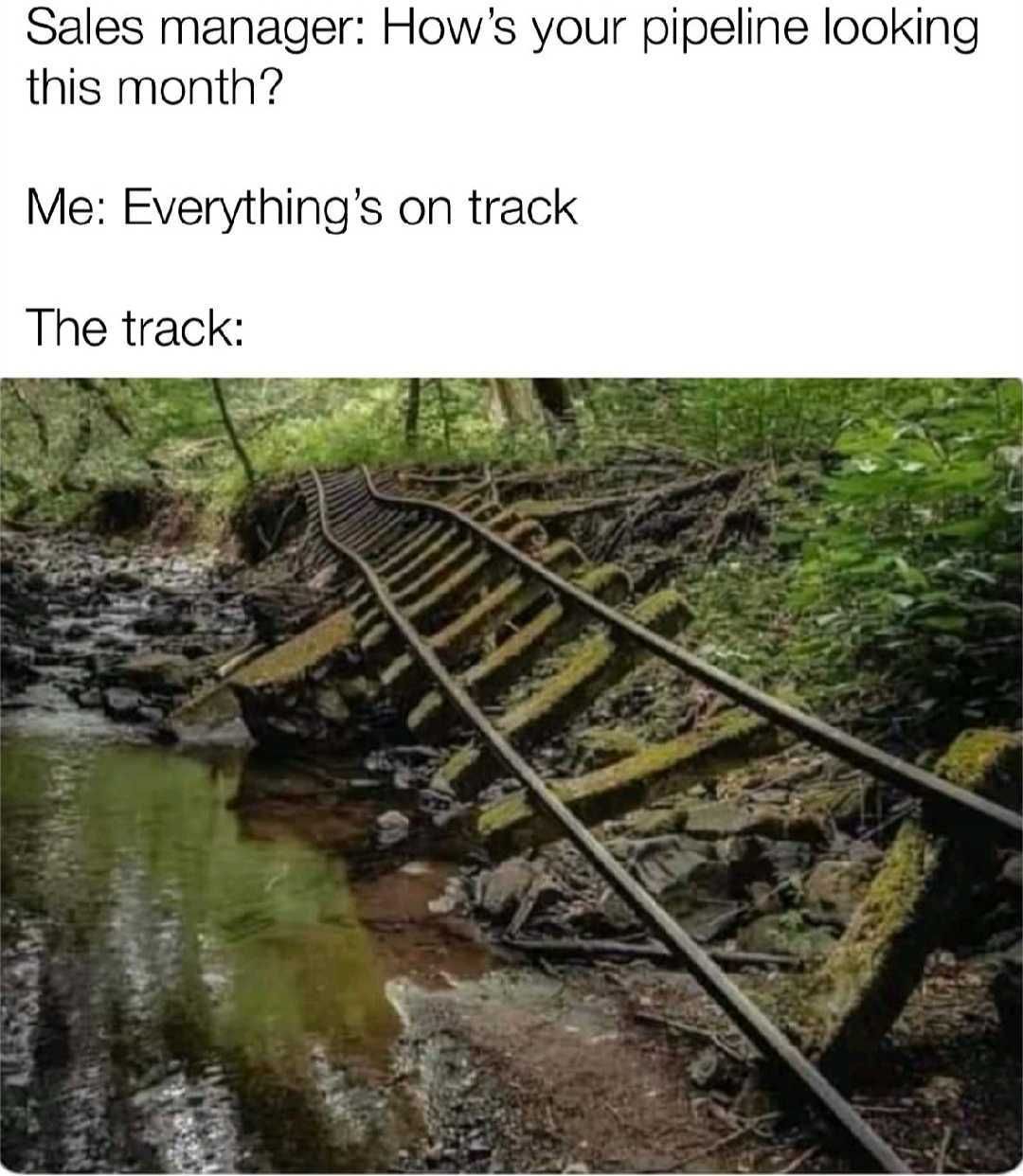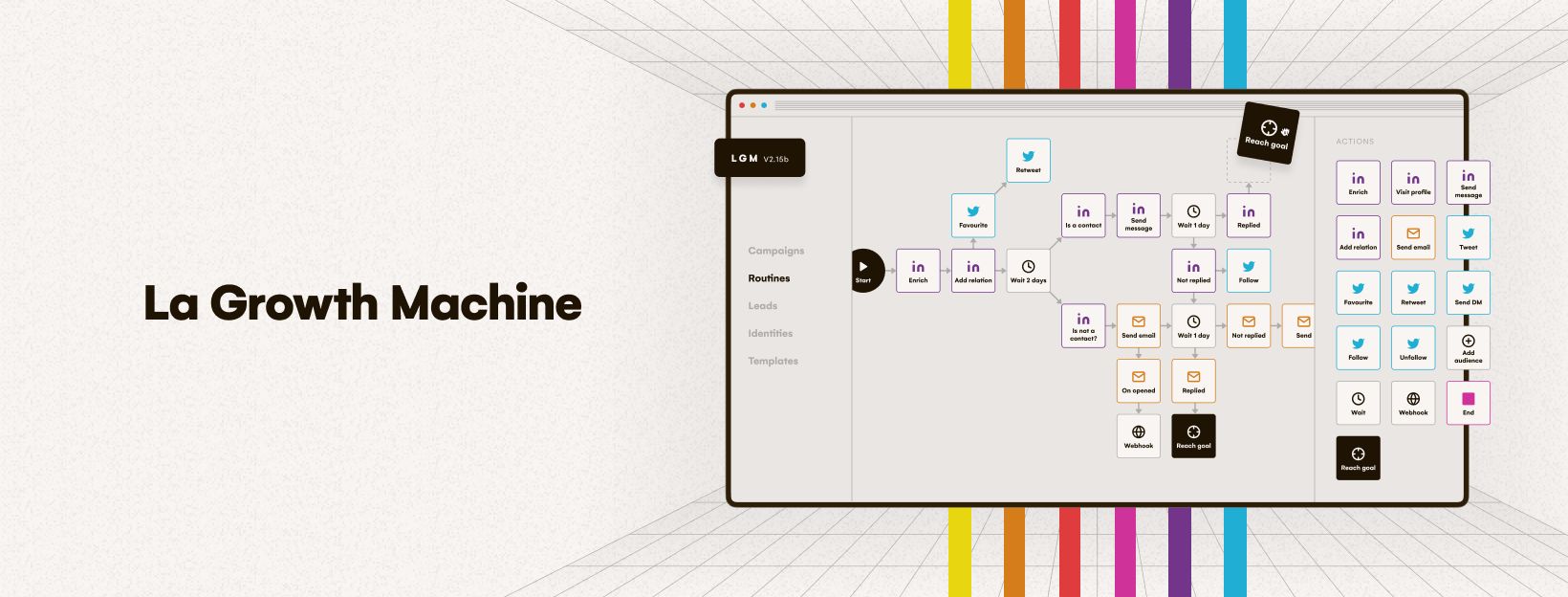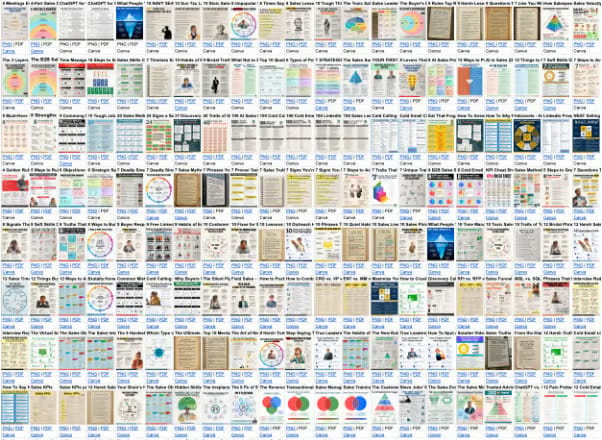- SalesDaily for Leaders
- Posts
- 🧑🏫 Coaching ≠ managing
🧑🏫 Coaching ≠ managing
Are you building followers or owners?
Sales teams waste hours every week sending follow-ups manually.
LaGrowthMachine fixes that.
It automates multi-channel outreach across LinkedIn, email, and X - while keeping every message personal.
Here’s how it works:
1️⃣ Connect your LinkedIn, email, and CRM.
2️⃣ Build smart sequences that switch channels automatically.
3️⃣ Personalize every touch with dynamic variables and AI-driven messaging.
4️⃣ Track replies, sync data, and focus on qualified leads (not copy-paste tasks).
The result: 3x higher reply rates, 10x faster prospecting.
Teams at PayFit, Pennylane, and Qonto already use it to scale outbound without extra headcount.
Clean setup. Real personalization. Predictable results.
👉 Learn more at LaGrowthMachine.com
Welcome to SalesDaily for Leaders: your weekly briefing packed with actionable insights to help you manage better, coach smarter, and drive results in B2B sales.
Every Sunday, we provide the latest strategies, resources, and ideas for leading high-performing teams and staying ahead in today’s competitive landscape.
Let’s dive in!
In today’s issue:
Kevin Dorsey Create ownership, not obedience
Krysten Conner: Protect yourself during forecast season
Martin Roth: Lead the comp conversation
Ed Meyer: Manager vs. coach
Create ownership, not obedience
Kevin Dorsey breaks down why great leaders don’t just give instructions. They inspire belief.
Start creating buy-in
Telling your team what to do leads to surface-level compliance. Selling them on why it matters builds ownership, trust, and motivation.
✔ Telling creates followers
✔ Selling creates believers
Tell vs Sell: Side-by-side
➤ TELL: “Be on calls by 9am”
SELL: “9 to 12 is our best shot before prospects get swamped with meetings”
➤ TELL: “Update pipeline every Friday”
SELL: “Clean data Friday means Monday starts with clarity, not chaos”
➤ TELL: “Use the new process”
SELL: “This cuts out the top 3 time-wasters you flagged and gives you 5 hours back weekly”
The task is the same. The approach turns push into pull.
Why leaders default to telling
It’s faster. It feels efficient. It skips the mental lift.
But it leads to:
• Mindless execution
• Resistance without reason
• Teams doing tasks without belief
Telling builds box-checkers. Selling builds problem-solvers.
Why selling your team works
When you lead with why, you tap into psychology that drives real motivation:
✔ You show respect for their intelligence
✔ You create ownership over outcomes
✔ You build trust by being transparent
People want meaning. Give them the reason, not just the rule.
Use this before your next ask
Ask yourself:
• What problem does this solve for them?
• How does this help them hit their goals?
• What happens if we skip it?
• What’s now possible if we follow through?
Lead with that. Then make the ask.
Simple swaps that shift behavior
❌ “I need you to…”
✅ “Here’s what this makes possible…”
❌ “Just do it because…”
✅ “This matters because…”
❌ “The new rule is…”
✅ “This protects us from…”
The ask stays the same. The delivery changes how it lands.
Lead like a seller, not a taskmaster
Leaders who sell their vision don’t need to hover.
Their teams understand the why, believe in the work, and own the outcome.
👉 Power up your sales team
If you lead a sales team, run training sessions, or coach reps - this is for you.
With SalesDaily Elite, you get full white-label rights to my complete library of sales cheat sheets, guides, and templates.
✔️ Editable Canva files you can brand as your own
✔️ Ready-to-use for team onboarding, and workshops
✔️ Built for high-impact sales team enablement
Stop wasting time building resources from scratch.
Protect yourself during forecast season
Gabe Lullo reminds us that tools can support your process, but it's people who drive your revenue.
People drive results, not platforms
AI can help you do more, faster. But it can’t replace real human connection.
➤ Use AI to increase interactions, not replace them
➤ Focus on building a strong team before building a tech stack
➤ Prioritize three things: hiring, training, and promoting
Hire for grit, not polish
Experience looks good on paper. Grit performs in the real world.
✔ Don’t chase perfect résumés. Chase resilient people
✔ Grit can’t be trained. Skill can
✔ Ask about real-life challenges: “What’s the hardest thing you’ve overcome?”
Example: Gabe once hired a rep who hid under his desk during week one.
Three months later, he was the top performer. He had no experience, but he had grit.
Training is your responsibility
Most reps never get structured coaching. And most managers think tools will fix that.
➤ Flat pipeline with high activity? That’s not a tech issue
➤ Tools amplify skill. They don’t create it
➤ Reps don’t need dashboards. They need direction
✔ Sit in on live calls
✔ Review recordings
✔ Coach handling objections and closing
If you can’t coach them, invest in someone who can. Your people want to win. Give them a shot at it.
Career paths retain top talent
Good reps don’t stay where they see no future.
➤ Reps need to see what’s next or they’ll leave
➤ Every SDR wants to know if there’s a real plan after this role
➤ If you don’t build careers, you’ll burn through talent
✔ Show them where they can go in 6, 12, or 18 months
✔ Lay out the next steps: AE, manager, or specialist
✔ Growth fuels loyalty. Visibility drives motivation
Hiring the wrong rep is expensive
Making a bad hire doesn’t just hurt morale. It wrecks your pipeline.
Cost in the first 90 days:
• Cash comp: $15,000 to $22,500
• Tools, training, enablement: $10,000+
• Recruiting and ramp: another $10,000 to $20,000
That’s $35K to $54K before any revenue. And that doesn’t include the lost deals from an empty or underperforming seat.
Losing an A-player costs even more
A top SDR typically drives:
• $63K in new ARR per month
• $175K in pipeline per month
• $750K ARR influence annually
• $2.1M in pipeline annually
Lose them and it takes 4 to 5 months to fill and ramp the seat. That’s $250K in ARR lost. And the pipeline doesn’t wait.
What lowers the cost curve?
✔ Hire for grit (so you miss less)
✔ Train for skill (so they convert more)
✔ Promote with purpose (so they stay longer)
Your people are your edge. Invest like it.
Advice to act on
➤ Ask about adversity during interviews
➤ Train like performance depends on it. Because it does
➤ Don’t confuse tools with coaching
➤ Define a clear promotion plan
➤ Tools assist. People win deals
Partnering with:
Mailshake: Cold email made simple and effective
Smartlead: Automate outreach without losing the human touch
folk: Manage relationships and scale outreach in one smart CRM
La Growth Machine: Multichannel prospecting that actually scales
Check them out!
Manager vs. coach
Ed Meyer breaks down why most sales orgs get it wrong by expecting managers to also be coaches.
Manager and coach are not the same job
When one person tries to do both, coaching gets dropped, reps stop improving, and turnover increases.
A manager focuses on output. A coach builds skill.
→ Expecting both from one person means neither gets done well.
What managers are supposed to do
✔ Drive KPIs and metrics
✔ Hold reps accountable to targets
✔ Forecast and report on pipeline
✔ Build systems to scale performance
They push for results and enforce execution.
What coaches are supposed to do
✔ Help reps improve their calls and confidence
✔ Run roleplays, give feedback, review deals
✔ Focus on soft skills and mindset
✔ Work 1:1 on behavior, not just numbers
They build skill through repetition, not pressure.
Why trying to do both breaks teams
➤ Coaching becomes an afterthought
➤ Reps only get feedback when they miss quota
➤ High performers get attention, everyone else gets ignored
➤ Sales meetings turn into leaderboard shaming
➤ Culture suffers, and performance stalls
How to fix it
✔ Split responsibilities between people, even if they’re not full-time roles
✔ Use AI or peer-led coaching if you can’t hire
✔ If you must wear both hats, separate the time:
→ 1st half of the meeting = metrics
→ 2nd half = coaching and skills
Don’t blend feedback on performance with training.
Good coaching doesn’t just “feel nice”
It raises win rates, lowers ramp time, and keeps your reps from quitting.
Most teams don’t need more leads. They need to coach better with the ones they already have.
Lead the comp conversation
Martin Roth lays out how sales leaders should approach comp negotiations during planning season - by leading the process, not waiting for it.
Tie your compensation to the plan you create
If you’re building the revenue plan, you should own how you get paid for delivering it.
✔ Think like an owner
Ask yourself how much you’d pay someone to deliver the results you’re responsible for.
If you’re driving $25M in ARR and adding $250M+ in enterprise value, your leverage is entirely different from someone adding $1M.
✔ Know what you’re optimizing for
You can’t maximize both cash and equity.
Decide your priority before the conversation starts.
→ Bring your own plan
Don’t wait for a comp package to appear in your inbox.
Come prepared with:
• Your 2026 revenue plan
• The key assumptions
• A comp model that matches your plan
That’s how you show ownership and alignment.
✘ Don’t agree to numbers you can’t hit
Ambition is fine.
But tying compensation to unreachable targets only sets you up for frustration.
✔ Structure for long-term upside
You don’t need all your value in base or OTE.
Make accelerators meaningful and keep targets realistic. That’s where top earners win.
→ Frame it around enterprise value
Every $1 of ARR can create 5–15x in enterprise value.
Use that logic when you negotiate equity. It’s a business case, not a bonus.
Leading the conversation proves you understand how revenue connects to company value.
That’s what separates good revenue leaders from great ones.
TO-GO
Gal Aga: Hire for what you can’t teach
Todd Busler: The most important part of your job
Richard Smith: How to make better hiring choices
Harry Monkhouse: How I measure my BDR team quarterly
QUOTE OF THE DAY
"Most sales leaders manage the pipeline. The best manage the people who build it."
PODCASTS
HUMOR





